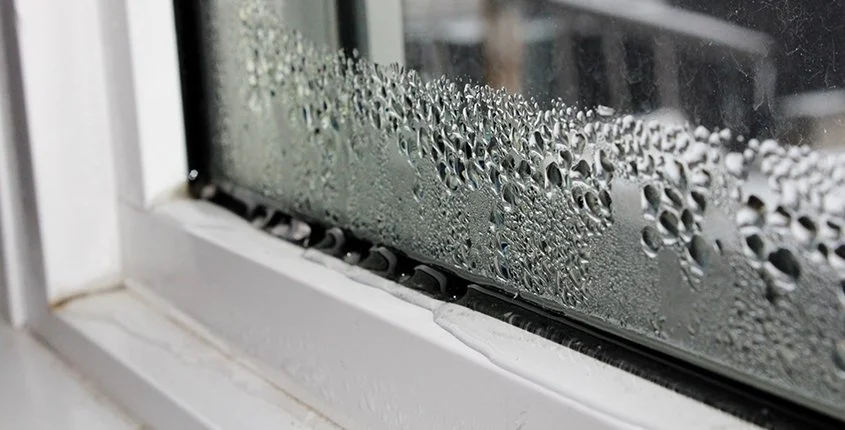Hot and Humid? How to Reduce Excess Indoor Humidity
RH Business Marketing Solutions
Have you noticed your home feels more humid than usual? Did changing the setting on your thermostat make no difference? The plumbing, lack of insulation in the home, and poor ventilation can cause humidity issues.
If you experience high humidity, it can be detrimental to your health, your furniture, and even your home. Let’s look at the potential problems and how to address them most easily.
Start with Your HVAC System
An improperly functioning HVAC system tops the list of causes of improper humidity. Have your air conditioner serviced. A maintenance visit typically costs little but can provide valuable improvements to HVAC operation. The HVAC technician recalibrates the system and changes out the filters. They also examine the working parts to ensure reliable operation during the heating or cooling season.
Add Whole Home Ventilation
Homes need ventilation, too. Do you know that breath of fresh air you experience when you step outdoors? Your home needs its own version of that to ensure adequate air supply. This can be remedied by installing a ventilation fan that runs continuously. Energy Star fans only cost between $7 and $15 per year to operate and they help control humidity by ensuring proper airflow. Purchase and installation typically range from $700 to $1,000.
An insulation upgrade project is the ideal time to add ventilation to your home. Ventilation and insulation form two little discussed components of a full HVAC system. In some locations, an insulation contractor can also install a ventilation system, but in other areas, the municipality requires a licensed HVAC contractor to complete the work.
Choose from a ventilation exhaust system or a balanced ventilation system. The former removes air from your home and expels it outdoors, while the latter sends out indoor air and pulls in outdoor air. An energy audit from your utility service can help you determine if this would suit your home. You can also opt to get vented logs for your fireplace to ensure that’s not causing any issues.
If that doesn’t address the issue and the humidity in the home still feels unbearable, try examining the plumbing, starting with your bathroom.
Check for Plumbing Leaks
While you should start in the bathroom, also check the kitchen, your home’s utility room, and any other room with plumbing. It also includes any workshop you might have built onto your home that includes a sink or bathroom.
Look for condensation on the pipes first. What defines excess condensation? Well, if you see it and notice it, that’s too much.
Check the pipes for leaks, too. That tiny puddle of water beneath the sink offers a dead giveaway as to the humidity issue. Likewise, a dripping faucet or shower head causes problems with excess moisture.
On the exterior of each wall, check for targeted moisture or discoloration. Sometimes, the leak lives inside the walls. Look at the ceiling, too. Feel the wall. A wall with a leak behind it feels spongy. Turn off the water and phone a plumber.
Check the Ventilation in the Bathroom
You might think that you can get away without having a ventilation fan/ceiling heater in the bathroom, but that’s incorrect. You need those fans to vent the moisture out of your toilet or to dry it quickly.
Some older homes vent the bathroom exhaust into the attic. That simply redirects the problem.
Instead, have the ventilation fan run to the exterior, so the humidity moves outside your home. The attic needs to remain dry to help protect the rest of your house, and any stuff in storage in the attic. While you wait for the HVAC service to fix it, you can crack a window in the bathroom while you shower to ensure that moisture gets expelled instead of being trapped.
Check Your Home’s Insulation
Examine your home’s insulation beginning with the attic. Insulation seals your home from the elements and keeps it dry. From the attic door, look directly into the attic and examine the floor joists. If you can see them, you don’t have enough insulation.
Adding insulation to your attic and your basement, if your home has one, will decrease your humidity. It will also help lower your utility bills. Choose higher R-value insulation and cover the attic in it so that you can no longer observe the floor joists.
Check the Windows and Walls
Replace older, inefficient windows with Low-E windows that have higher insulating properties. These help reduce drafts and block condensation. You can also update the insulation in the walls when you remove the window for replacement since this opens up the framing. Your walls may not have the appropriate insulation, but window upgrades offer an ideal time for this, especially if you use blown in insulation.
It may seem odd that your plumbing or insulation could affect your home’s humidity but it does. While most homes receive their insulation when the HVAC gets installed, your home may need an upgrade of both. Addressing these issues fixes humidity problems and can help restore comfort to your home.
Guest Contributor: Ryan Greene
